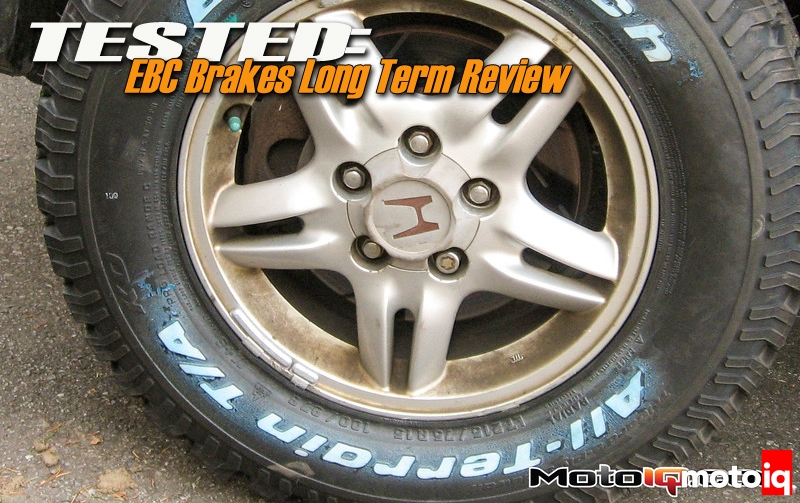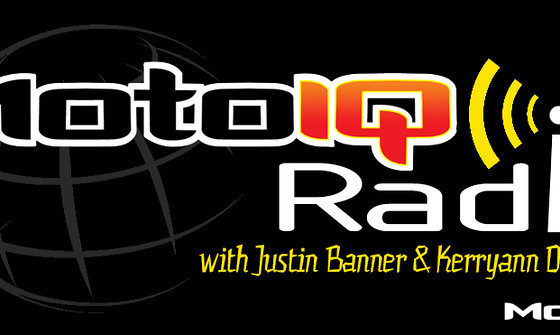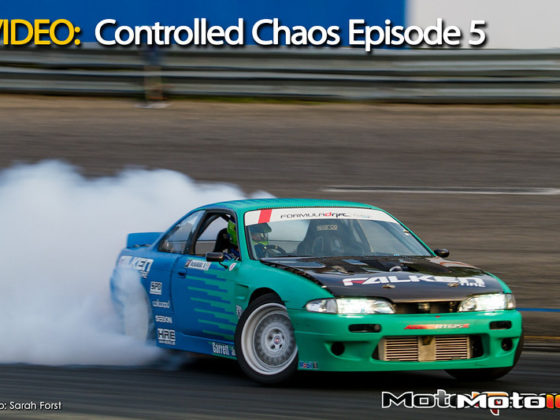,
 Another nice feature of the URS rotors is the slightly larger cooling vanes in the rotor face. Judging by the thickness of the material left, the old rotor could have been turned down and reused…but then we wouldn't get the benefits of the slotted rotors.
Another nice feature of the URS rotors is the slightly larger cooling vanes in the rotor face. Judging by the thickness of the material left, the old rotor could have been turned down and reused…but then we wouldn't get the benefits of the slotted rotors.Since these are OEM replacement parts, installation was incredibly easy. Just pull the caliper, pads, and rotor, install the new parts, bolt everything back together, and grab a beer. It took us about an hour to do both fronts (the 1st gen CR-V has drum brakes in the rear, unless you live in Australia where you were lucky enough to have the option of rear discs). After bedding the pads, we were happy to note that the front did indeed dive more with the new pads under braking, indicating that these new pads and rotors were giving us more braking torque up front. The ABS easily compensated for this added braking. The new brakes were also a bit easier to modulate than the old worn out brakes.
 It's really nice Honda gave the CR-V such open alloy wheels…the better to show off our pretty new EBC brakes with!
It's really nice Honda gave the CR-V such open alloy wheels…the better to show off our pretty new EBC brakes with!In a normal part review, this is where we would say “we love how our new brakes work!” after only driving a few hundred miles on them (in fact we did just a paragraph ago). But why stop there? We put 35,000 mile on these pads and rotors in all sorts of conditions. We use our CR-V for just about everything, so let's take a look at each situation.
Street Driving
Let's get this out of the way right now: yes, this car has been in an accident. The previous owner hit a deer while driving home one night. Luckily the damage was only cosmetic, so we were able to pick this CR-V up for dirt cheap. Fortunately, we never had to put the EBC brakes through any Bambi dodging ourselves.
 Not even on 300 mile trips to New York at 6AM to deliver puppies to a new home.
Not even on 300 mile trips to New York at 6AM to deliver puppies to a new home.It took only a few miles to bed the pads, but it took about 100 miles for them to be fully worn in. During the first 100 miles, the pads made a slight groan under light braking and you could hear the slots of the rotors passing over the pad. After a week or so, the groan disappeared and these pads were absolutely silent until the day they wore out, at which point they started to squeal. Once they were fully bedded and seated, we noticed a bit more dive under braking, which can be attributed to the softer compound of the EBC 6000 series pad. We never did any brake testing (in 2011, this was never meant to be a MotoIQ project), so we do not know if stopping distances shortened up at all.
A few months after installing the EBC pads, we replaced our old BFGoodrich Touring tires with a set of BFGoodrich All Terrain T/A KO tires. The new tires were picked to improve traction off road, but still be tolerable on the street. We also went up a size from 205-70/15 to 215-75/15 to get more traction and ground clearance. The new AT tires were a good deal heavier than the old street tires, but the EBC pads didn't notice this. Braking was just as strong, if not stronger due to the stickier and wider rubber.
 BFGs make even crossovers cool.
BFGs make even crossovers cool.The EBC pads did dump quite a lot of dust on the wheels. If there is one complaint to be had about the Greenstuff pads, it's that they are rather dusty and if you are fastidious about your car's appearance you might not like this. Since this CR-V doesn't really get washed much, this wasn't too much of an issue for us.
 Mud protects paint just as well as wax, right?
Mud protects paint just as well as wax, right?


